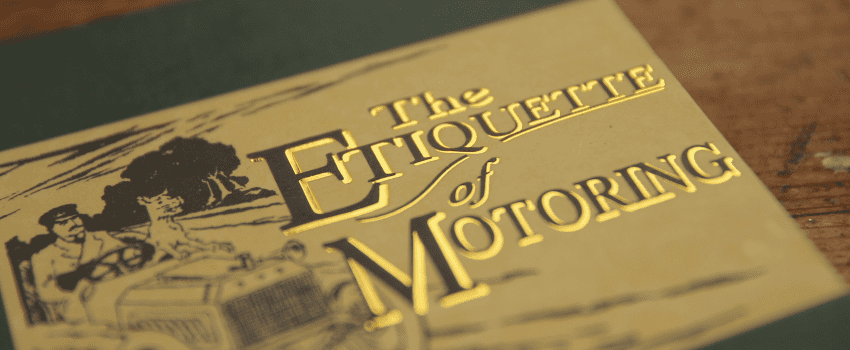
Have mercy on children (and other early motoring advice)
31st Aug, 2022
Cars are such a huge feature of modern life now that it can be difficult to imagine a world without them. But all the way back in the 1900s, they weren’t the ubiquitous modes of personal transport now. They were treated like (and comparable to) steam trains, and ones that could plough through your neighbourhood with little warning. They were big, scary, unsafe, and very, very new.
That meant there was a lot of pressure on early drivers to properly control them, and a lot of advice available to help them to do so – all handily collated and available for reading in the Etiquette of Motoring. This advice varies from the strange to the sensible, but you might be surprised at how much of it is actually still applicable to modern driving. Here, we’ve collected some of the best bits of it – so if you ever come to scrap your car, it’s perhaps worth bearing some of it in mind!
“Don’t drive on the wrong side of the road”
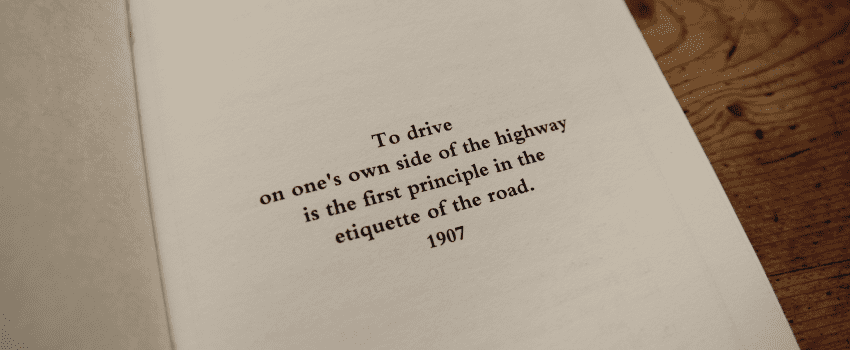
It doesn’t take a genius to work out this one. First of all, it’s highly dangerous. Far more importantly, though – it’s downright impolite. Almost as soon as you open the book, the Etiquette of Motoring is quick to remind you that “to drive on one’s own side of the highway is the first principle of etiquette on the road”. To be fair, it’s really hard to argue with that. Back then, cars weren’t capable of achieving nearly the speeds they are today, so oncoming people and animals would have had a lot more time to react. But you can bet there would have been some extremely vigorous tutting.
“Learn to steer”
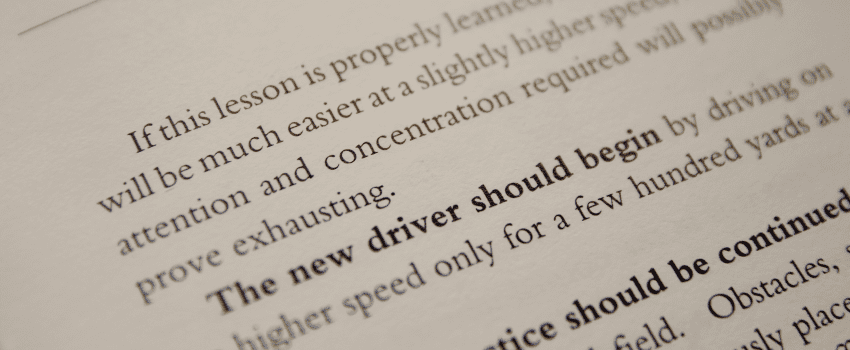
Once more, it’s a perfectly solid piece of driving advice which has stood the test of time. If you’re planning on taking your motor car out onto the cobbled streets, you will indeed need to be capable of steering it. Those who were just embarking on your driving career, would ideally have a more experienced driver controlling the clutch pedal, which goes to show that the idea of dual-control cars if far older than perhaps many of us first thought. The Etiquette of Motoring suggests finding a suitable empty road to practise on – or failing that, a few loops around one’s own courtyard would suit nicely. (Back then if you didn’t have at least one manservant, you had no business owning a car in the first place.)
New drivers were also warned that the attention and concentration required will “possibly prove exhausting”. This sounds a little silly before you consider that this was well before power steering existed, so the effort involved would indeed be pretty physically tiring. It was also well before modern road infrastructure was in place, so you wouldn’t have all the lights, signs and signals that modern drivers rely on for split-second warnings and vital early indications. They save us more mental energy than we probably give them credit for!
“Take corners at walking pace”
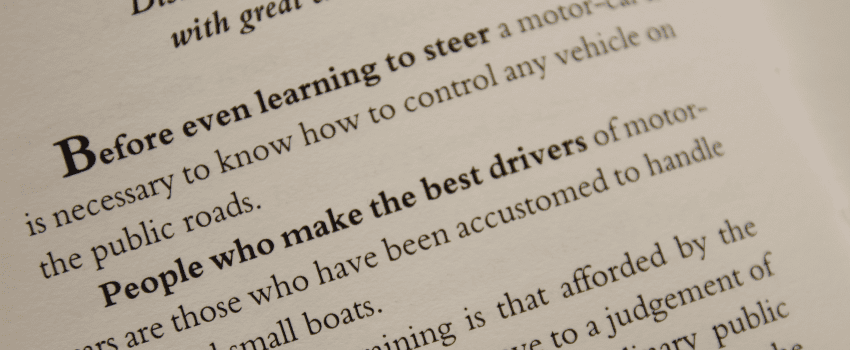
OK, so the early 1900s weren’t exactly Tokyo Drift, but taking corners too quickly has always been an easy way to lose control of your vehicle, so the advice is still sound in principle. Plus, partially due to the lack of power steering we touched on above, older cars weren’t what you’d call responsive, so taking corners at walking pace would be the best way to maintain total control over vehicles which didn’t always have the manoeuvrability to match their speed.
Of course, regularly practicing your steering would help, and the book helpfully mentions that enterprising gentlemen can give themselves a decent head start if they are “accustomed to handling yachts and small boats” – which should tell you something about the turning circles of these things. You could also practice honing your reflexes on your bike, as “the speed of a bicycle is commonly in excess of ordinary road vehicles”. Those in today’s inner-city commuter belts might well say – ’twas ever thus.
“It is not advisable… to have a speed recorder”
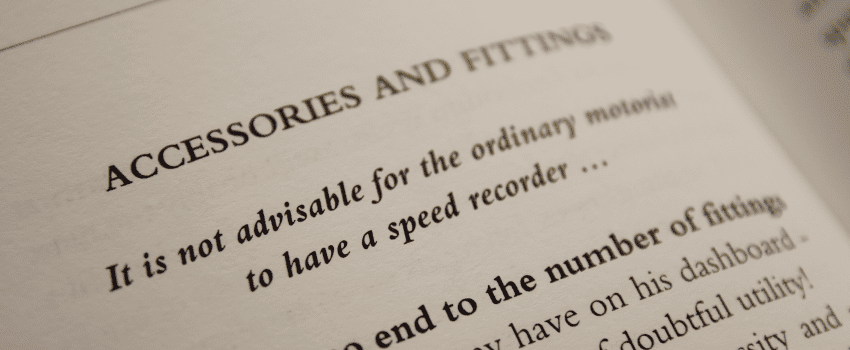
This is one bit of advice we definitely can’t get behind in quite the same way, and feels especially difficult to reconcile with an age where AI-controlled speed limiters have recently become mandatory. But in the words of one historical contributor: ‘it is doubtful whether they give much pleasure to the average owner of a car’. Safety-critical or not, you can’t really argue with that.
They’re also described in the Etiquette of Motoring as ‘very costly, and of doubtful utility’. We’re not sure about costly, but they definitely have utility for anything capable of travelling over 15mph, as modern cars do. Presumably in the olden days, if you needed to know what speed you were travelling you’d just ask your manservant to estimate as he cycled alongside you.
Interestingly, what historical contemporaries did actually recommend is something a little left of field – it’s a gradometer. These devices were used to measure the hill gradients over which your car was travelling, which doesn’t sound all that useful until you consider this was an age where most cars were easily defeated by particularly steep inclines.
Have mercy on timid women, dogs and children
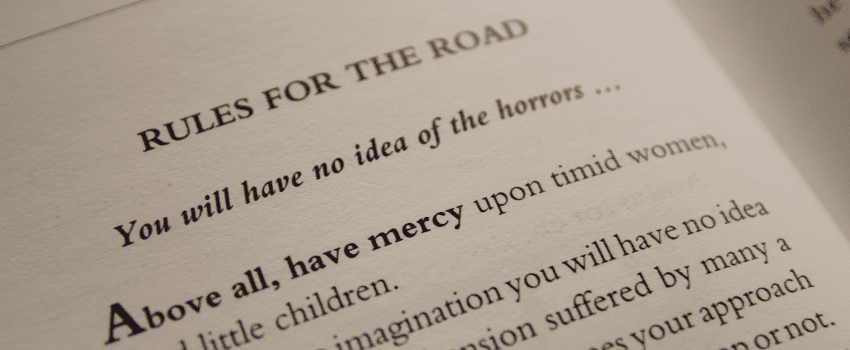
Really, you need to read the original text in order to appreciate this advice in its full glory; “You will have no idea of the horrors of apprehension suffered by many a woman alone in a pony trap who sees your approach and does not know whether you mean to stop or not.”
It then proceeds to warn aspiring drivers to go very quietly past this hypothetical woman, in case she should take fright. Now, while this is obviously wrapped up in some extremely, ah, period-appropriate modes of thinking, once you dig past the problematic surface layer you’ll find that there is actually some solid advice buried in there.
Essentially, it’s reminding you that you don’t necessarily always know what anyone else is thinking, or what their intentions are – or for that matter, what they think about yours. In other words, it’s about the importance of communication, and clearly signalling your intentions to other road users. Modern indicators and hazard lights give us more ways to do this than ever, proving that this is a piece of advice which has stood the test of well over a century of motoring advances (even if the author does tend to refer to women as if they’re a flighty herd of wildebeest).
It also cautions that children and dogs similarly have a right to life, even if the latter is ‘a senseless, ill-conditioned barking cur’. Which we think is a very polite way of basically saying please don’t steer your car towards random people and animals, even if they’re annoying you.
So yeah – all told, this book is a bit of a mixed bag. As we’ve highlighted though, that doesn’t mean it’s useless to today’s drivers. You just need to take in all the available information in front of you, dismiss the irrelevant or outdated stuff, and use your best judgement as to what to pay attention to as you move forward. Just as you do when you’re driving!
And speaking of which – if your car is something else that’s starting to show its age, that’s exactly where we can help here at Scrap Car Network. We make it simple and easy to scrap your car, and get maximum cash in the process. Just enter your reg and postcode into the fields on our site and we’ll get you an instant quote before you can say scrap my car. Curious to find out how much yours is worth?